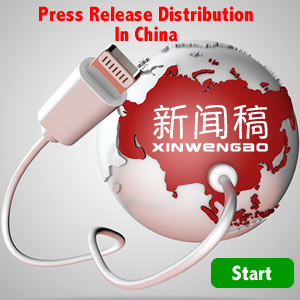Linktone's (LTON) gross revenues for the fourth quarter of 2004 increased 135% from $6.6 million for the fourth quarter of 2003 and 17% from $13.3 million for the third quarter of 2004. These results were announced as part of its financial results for the fourth quarter and fiscal year ended December 31, 2004.
"Linktone's fourth-quarter revenue and earnings growth underscores the fundamental strength and momentum of our business, despite challenging industry conditions," said Raymond Yang, chief executive officer of Linktone. "During the quarter, sequential sales growth for 2.5G and audio-related services exceeded our expectations and more than offset an anticipated decline for short messaging services. The wireless value-added service industry in China has experienced a series of changes in the regulatory climate in recent months, and, as a result, we believe that the market is developing into a more mature and healthy industry for all participants."
Fourth-quarter 2004 net income under U.S. GAAP increased 106% from $1.6 million, or $0.07 per fully diluted American Depositary Share (ADS), for the fourth quarter of 2003 and 18% from $2.8 million, or $0.10 per fully diluted ADS, for the third quarter of 2004.
The company's fourth-quarter 2004 net income under GAAP included $0.5 million of non-cash stock-based compensation expense. Excluding the effect of this expense and $0.2 million of other expenses associated with content provided to Linktone in prior periods, adjusted net income for the fourth quarter was $4.1 million, or $0.15 per fully diluted ADS. This compared with adjusted net income of $3.6 million, or $0.13 per fully diluted ADS, for the third quarter, which excluded one-time expenses associated with discontinued financing activities and office relocation as well as non-cash stock-based compensation expense. The reconciliation of GAAP measures with non-GAAP measures for net income and net income per ADS included in this news release is set forth in the company's financial statements below. All per-share computations for the fourth quarter were based on 27.3 million weighted average ADSs outstanding on a fully diluted basis.
Linktone's sales of 2.5G and audio-related services were $6.4 million for the fourth quarter, representing an increase of 137% from $2.7 million for the third quarter. Non-SMS sales contributed 41% of Linktone's fourth-quarter gross revenues, up sequentially from 20%. 2.5G services–including multimedia messaging services (MMS), wireless application protocol (WAP) services, and Java games–accounted for 29% of fourth-quarter gross revenues, up from 11% for the third quarter. Audio-related services, including ring-back services and interactive voice response (IVR) services, generated 12% of gross revenues, up sequentially from 9%.
The company's SMS sales were $9.1 million for the fourth quarter, compared with $10.6 million for the prior quarter. Linktone attributed the sequential decline principally to the ongoing effects of China Mobile's implementation of its Mobile Information Service Center (MISC) platform for customer service and billing management. During the quarter, the MISC roll-out resulted in the curtailment of joint marketing opportunities for China Mobile service providers, increased billing failures for China Mobile STK (SIM Toolkit) cards, and the automatic termination of subscriptions by users that remain inactive for a specified period of time, all of which impacted Linktone's SMS sales.
Linktone estimates that the company averaged approximately 7.1 million paying users per month for fourth quarter, compared with estimates of approximately 7.2 million for the third quarter. The sequential trend reflected the impact of the MISC implementation which caused certain codes by which users order Linktone services to become unusable during the implementation transition period. The company estimates that average revenue per user (ARPU) rose to approximately $0.74 per month for the fourth quarter, up 21% from estimates of approximately $0.61 per month for the previous quarter, reflecting the migration of users from basic SMS products to high-end 2.5G products.



